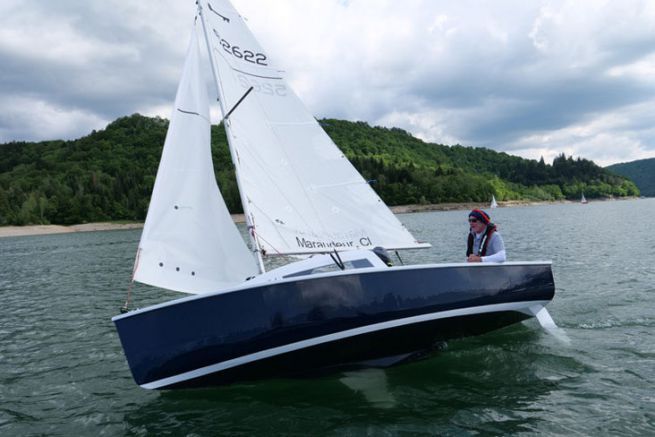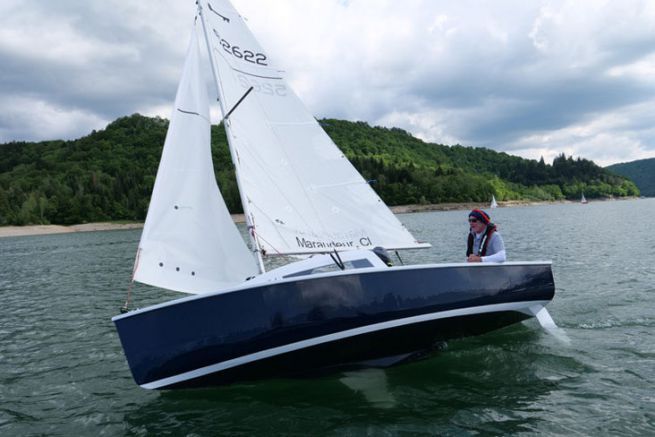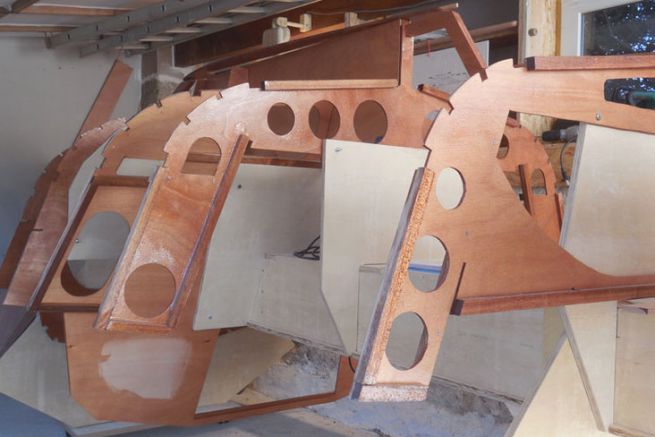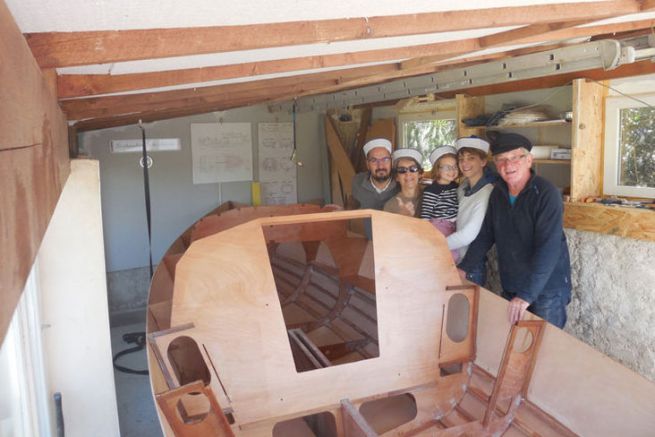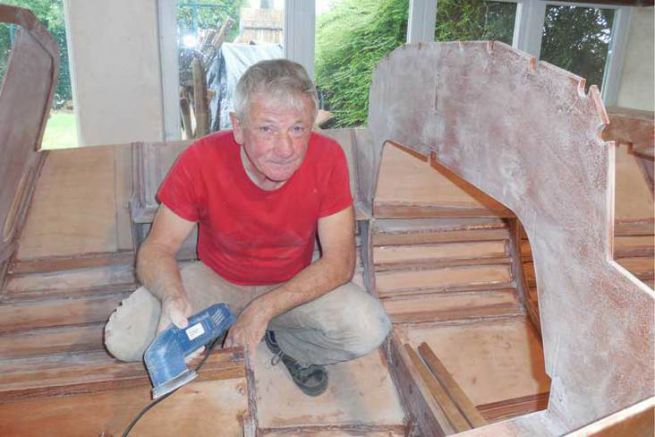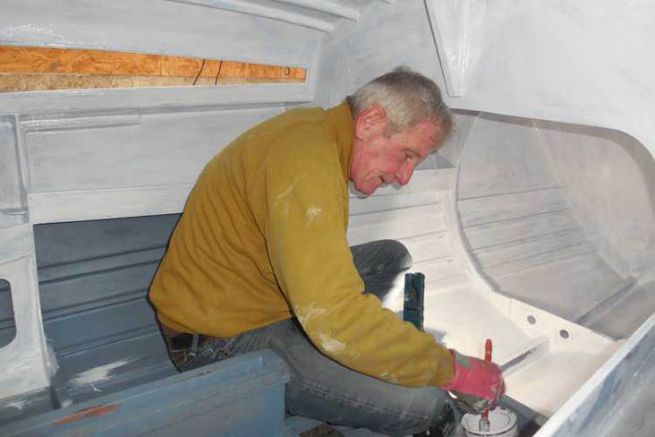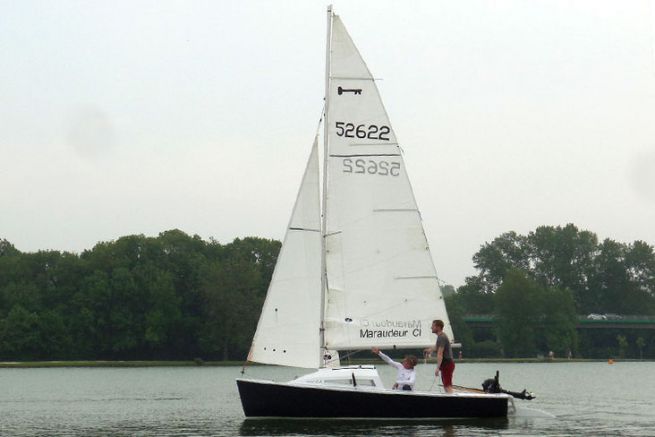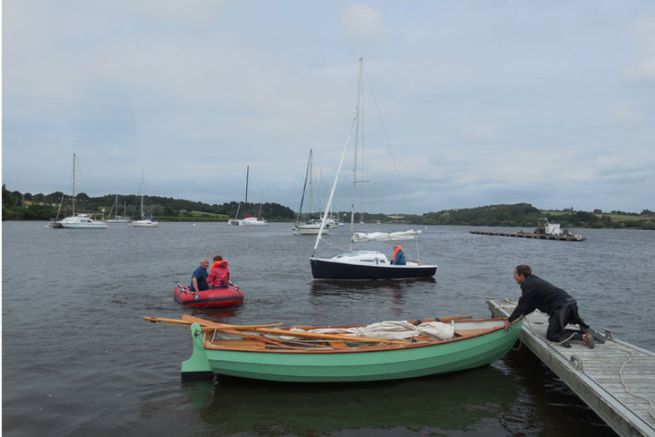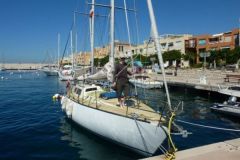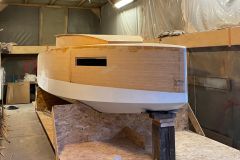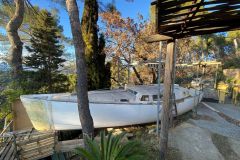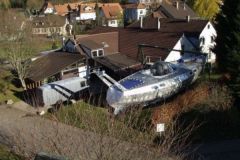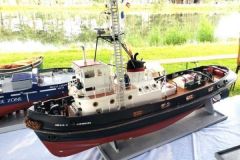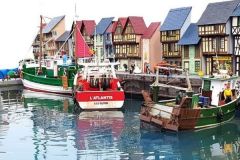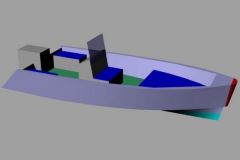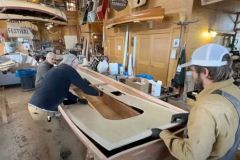Why build a boat as an amateur?
As my wife says so well: " I realized my dream, building my boat. "More than 20 years ago, I was already dreaming of setting out to sea with a small 420 bought from the St-Yrieix yacht club before it was sent to the scrapyard. As I often say in jokes, we made circles in the water, especially with my boys, a little with my daughters. It's a game we shared as a family.
Feeling the wind in the sail, especially when there is little wind, hearing the sound of the water on the hull, seeing another landscape from the open sea: it's beautiful, it feels good and it's a great way to escape.
Still active, I lacked the time necessary to realize my dream and then there were other priorities, but when the internet arrived I traveled a lot virtually and shared the adventures of the same enthusiasts as me. I continued to dream with everything that was close to the sea and boats.
And then it was time to retire, there was no shortage of free time. I devoted my professional life to building houses and I always had a lot of fun doing it, so building the object of my dreams myself was a matter of course.
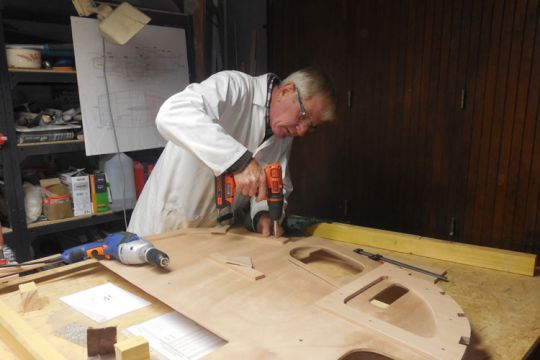
The choice of the boat model
I then defined my project. After making an inventory of the means at my disposal, I decided to build a boat of 5.00 m maximum length: this is the length of the building at my disposal to assemble and then shelter it. It also had to be transportable, so that it could be launched quickly and steered by one person alone.
The Marauder seemed like the best choice. So I got in touch with the owners' association and got to know its president Jean-Louis. He welcomed us warmly and presented his boat, which he had also built himself from a polyester hull moulded by the Jyplast shipyard. Comforted in my choice, I started this beautiful project.
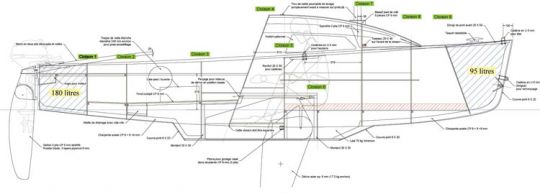
The Story of the Marauder
The Marauder was designed by the architect Jean-Jacques Herbulot in 1958 and has undergone many industrial and architectural evolutions.
In sixty years, he is on his tenth building site and fifth deck plan. It was built successively by ACM (Atelier et Chantier de Meulan), Naviking, AMC (Atelier Maritime Croisicais), Spair, Raymond Gallois, CNL (Construction Nautique de la Loire), Jyplast and then ACB (Atelier Composite de la Baie)
In 2016, in order to ensure the durability of the boat, AS Maraudeur orders from the architect François Vivier, the plans of an epoxy plywood unit intended for amateur construction: the Maraudeur CI.
"Désiré" (he will be named so) is the first copy.
Various types of marauder
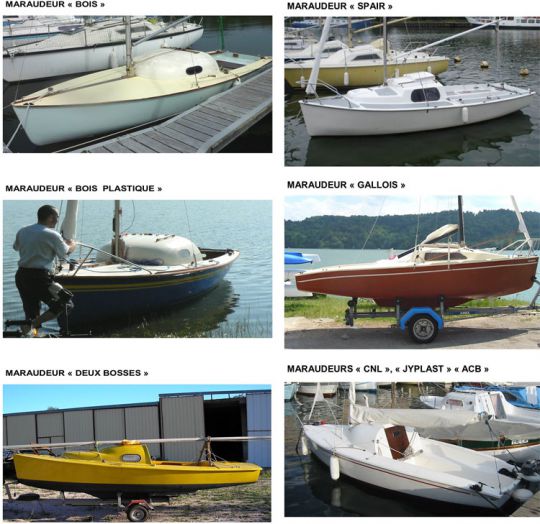
Site installation, supply, "site" beam
The construction file provided by François Vivier is particularly clear and precise. I am confident and decide not to use digital cutting of the plywood because I want to be the author of all the work.
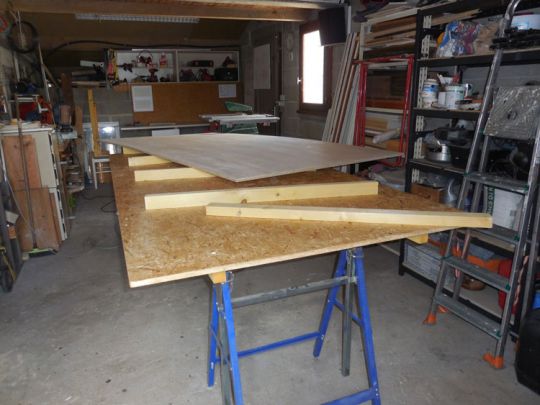
I will occupy two spaces for my construction site:
- A garage in the basement of my house will be used for carpentry. He hasn't seen a car in a long time! I built a cutting board there using a chipboard panel of the same size as the plywood (244 X 122 cm). The CP is placed on cleats that swivel around a trunnion. These cleats allow the necessary space for the saw blade, and the cleats can be moved on demand according to the cuts to be made.
- The garden shed will be transformed into an assembly shop. A concrete slab had to be poured and the building had to be completely closed with polycarbonate plate windows and doors. Electricity for light and heating had to be installed. It takes at least 15° to use epoxy resin.
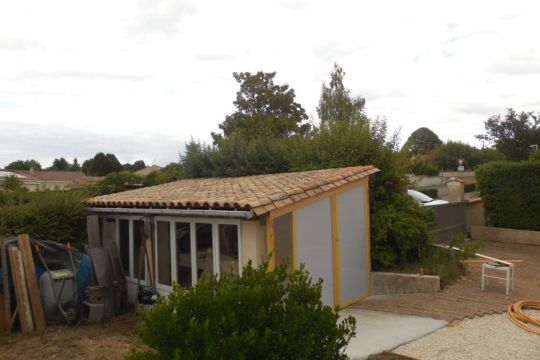
Supplies are made progressively: first the ordinary plywood for the central beam of the yard which will receive the partitions (upside down), then the "Tout Okoumé" plywood (not easy to find in our departments far from the sea) and finally the resin (whose qualities and defects I will gradually discover). We will come back later on the budget for this type of construction.
